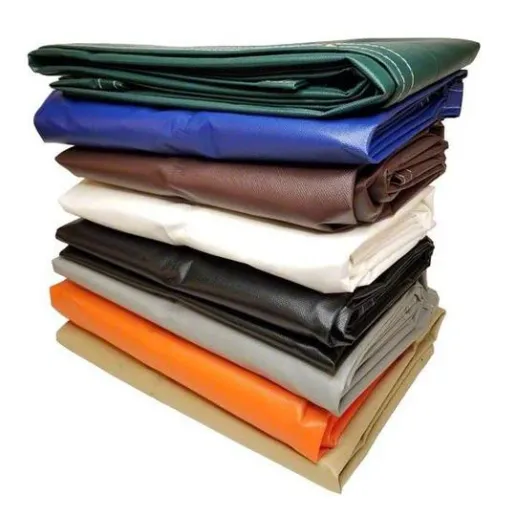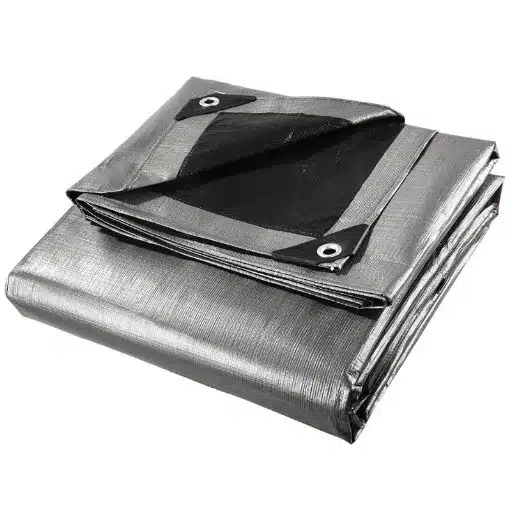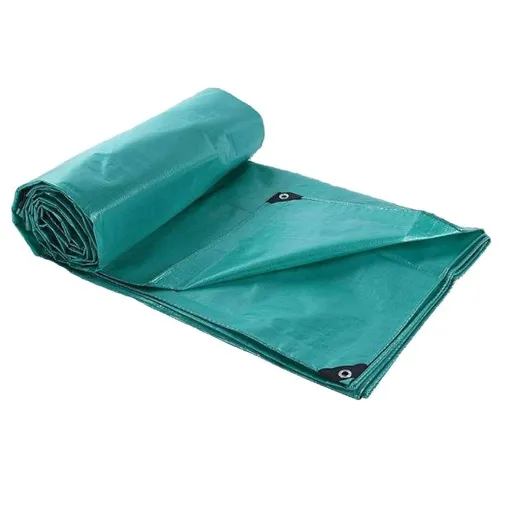Both canvas tarps and poly tarps are two of the most efficient tarps in the market and they are best for their intended purposes. On the one hand, canvas tarps are best for covering up certain spaces, objects or constructions, which was the traditional function of tarps. On the other hand, poly tarps offer a wide range of practical functions and traditional tarp utilities are just a small part of it. However, the question is, how do you determine which is effective and as well as the most practical depending on your needs? This article will address the strength, performance, and innovative uses of poly as well as canvas, providing some much-needed perspective in today’s market. Join us as we go in-depth and detail the upsides and downsides of each product.
Understanding Tarp Materials
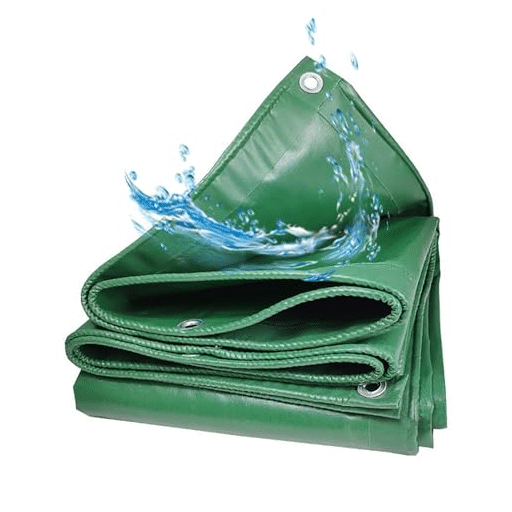
Explaining Canvas Tarps
Canvas tarps are multipurpose and made from a robust fabrication of woven polyester or cotton minimally treated with waterproofing and mildew-resistant coatings. These unique items are ideally used in construction areas, outdoor furniture covering, and outdoor shading that is not exposed to the sun, unlike synthetic and biodegradable means. One can especially prefer these tarps in cases whereby dust and other unwanted particles are likely to settle, particularly in seasonal use.
Defining Poly Tarps
By comparison, poly tarps, or polyethylene tarps, are uniquely made and quite versatile for they are woven and laminated with polyethylene materials. As a result of their waterproof and tear-resistant attributes, they are highly durable and are thus applicable in different areas such as camping, agriculture, and disaster relief. Their light weight allows for their easy handling, even though they need to be tough to withstand harsh conditions. In contrast, these tarps can be quite UV resistant and need reasonable sun protection, so the poly tarp is also known for this common property. Requiring rot and mildew protection, they afford superior tarp protection and can easily be delivered in an eco friendly way; that is poly tarp. Very competitive prices of tarps and their wide availability make poly tarps better for personal and business use.
Strengths and Weaknesses of Each Tarp Type
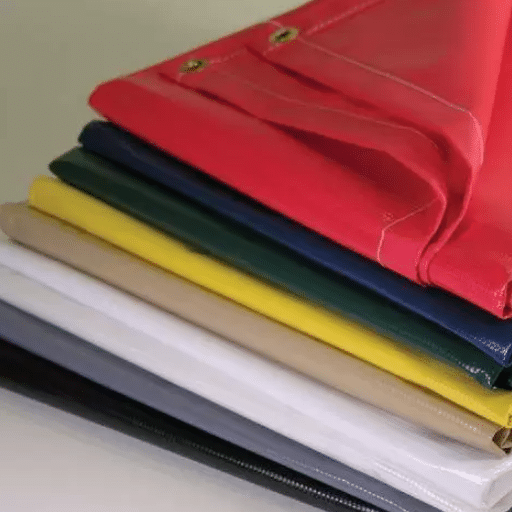
Durability of Canvas Tarps
Canvas tarps, reputed for their robustness and versatility, are highly sought-after in the market given their distinctive value in providing breathable and durable covers. As per the information available from the search engine trends, people are often found to clamor for canvas tarps for work which falls under the category of light to medium scale, which shows its ideal nature. Their unique blend of natural fibers have found a permanent spot in the market and they can resist tearing, and, to some extent, are reliable enough to stop harshness of weather from getting to their structure, but they can hold a decent amount of moisture, which can be exacerbated by prolonged use. In fact, if they are to be kept in a consistently humid environment, their life may be reduced which also contains eco benefits and warrants the conservation of the environment. Primarily, their breathability is highly sought-after and secured, making them a good choice for the agricultural industry.
Durability of Poly Tarps
Polyethylene polymer is used in the manufacturing of poly tarps, which are known for their durability and flexibility in a wide range of applications. They have been adopted in delivery and warehousing for the protection against rain and pelting as it was seen recently. Not only do they have a long life span, they are resistant to many outdoor deteriorations such as UV rays and mildew. Unlike old and contemporary tapestries, negligible amounts of moisture is absorbed into the poly tarps, allowing its prolonged use in wet, humid regions. With the latest search updates, they have shown improved tapestries with the incorporation of reinforcements and seam seals, making them superior in the market against other poly tarps as they outdo the old poly tarps in resisting deterioration from cutting and wear. Over the internet, people continue to ask about the durability of such tapestries, and the majority believes that, with limited attention to maintenance, they can last a number of years. In the current market, people invest in them, including those with load requirements, because they are able to take on heavy-duty and lightweight tasks.
Comparative Strength Analysis
When combing through the strengths of poly tarps, the statements made by a large proportion of the search community, as seen in ‘s statistics, can be summed up in the question that tends to resurface: ‘How do poly tarps compare to other materials in terms of strength and versatility?’ According to the most recent data patch, people are opting for poly tarps over other materials due to their ‘unmatched’ sturdiness and lightness in design. With my understanding, when compared to most other materials selected for the same functions, the fabricated canvas’ moisture-resistant nature is such that it is ‘almost nil,’ which places them above canvas tarps. As for the vinyl tarps, they have a completely different selling point, one that places them as a cheaper alternative than the vinyl, yet provides the same strength level required of average to slightly reduced workloads. For users working under different circumstances and financial constraints and demanding non-negotiable adaptability and affordability, poly tarps do the job without compromise.
Water Resistance and Maintenance
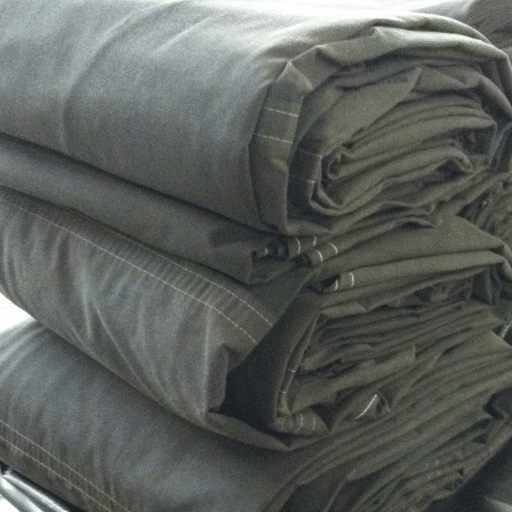
Features Offered by Waterproof Canvas Tarps
Canvas tarps, despite having pros such as their natural water resistance and strength, are not completely water resistant until and unless they are treated. Waterproofing can now be provided to canvas tarps thanks to new advancements. Such treatments include the wax or silicone coatings that remarkably improve the resistance of water. In the modern world where surfaces to cover are styled, the equipment and vehicles in the line of outdoor work can also be protected, including outdoor farming supplies. The venting features of a canvas makes the ability of the fabric to reduce moisture outstanding. This feature enables the fabric to reduce the moisture that has been trapped. Nevertheless, regular maintenance is required, which includes re-applying the waterproofing treatments, and it always has to be stored correctly, and these are all crucial aspects. This aspect of a canvas would not be perfect for heavy downpour protection, and for such cases, other materials like vinyl tarps would be better to use.
Poly Tarp Waterproofing Features
Effective waterproofing is the most distinct characteristic of polyethylene-based poly tarps, which are often ignored in construction materials. Unlike construction materials or other engine supply items, they are solely meant to withstand the effects of water. They offer an effective solution for these items, which is to cover them using polyethylene strips of a tightly woven structure and coat them with a water-resistant substance. When covering the items, they ensure that the area stays dry by repelling the water, which secures them the advantage of reducing the unnecessary expenses of engine items or construction that risk rust due to water. These tarps have undergone various tests and have defied sagging, which was mathematically impossible and can now be used in many other areas, boasting of their long-lasting III.
💡 How to Make Your Poly Tarps Last
- Secure Setup: Fasten securely to prevent wind stress and tearing
- Regular Cleaning: Clean with mild soap and water to remove dirt and debris
- Proper Drying: Ensure completely dry before folding to prevent mildew
- Storage: Store in cool, dry places away from direct sunlight
- Regular Inspection: Check for wear, holes, and fraying edges regularly
- Prompt Repairs: Use appropriate patches for small holes and tears
Unique Use Cases for Canvas and Poly Tarps
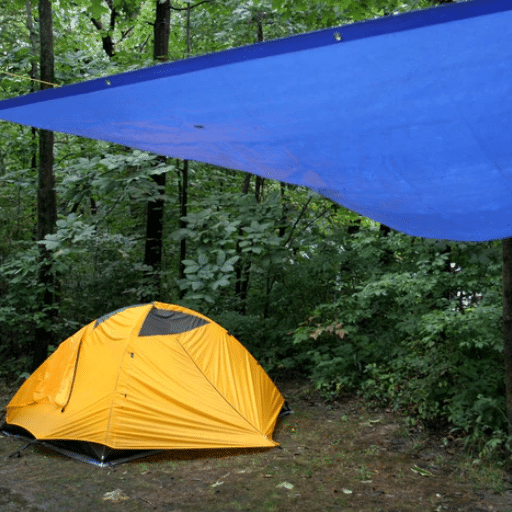
🏗️ Best Ways to Use Canvas Tarps
In protective covering, fabrics like canvas serve as the best. There is a specific application that requires the best cover fabric, equipment, and good airflow which canvas serves well. This application is face masks for patients that are highly efficient and to kettles of machines which need hot water. There is need to control the flow of air and the canvas cover should be in breathable mode. Canvas cover fabrics are one of the best equipment for industrial applications and construction. tools, equipment, and machines present in the covered area suffer molds and mildew. This is due to the canvas cover for the hay and grains to maintain breathability. Unfortunately, the covering is not always the solution, as half of the canvas covers can offer the maintenance or cleaning assistance for the billboards. campings and distractions also demand a solution to facades. It is a cover that is made of canvas, and on the roof, it provides heat and cooling solutions. You may use it in both home and business activities, and it is created with only a single modification.
🚧 Best Applications for Poly Tarps
Poly tarps, also known as polyethylene tarps, are considered a low-cost solution for plastic tarps and have a wide variety of uses. Based on the latest data obtained from , they are indeed on demand for both constructions and agricultural purposes, mainly for being water and heat proof. You can use it in different kinds of scenarios, such as protecting construction materials, machinery, and crops. Other areas that commonly use this tarp are for temporary repair of roofs, which is a well thought of away of managing leaks and storm damages.
One of the other trending ways of using this type of tarp is for recreation. Poly tarps are a must-have for every camper, not only for the convenience of making a quick shelter but also to cover ground to make sure moisture and west conditions are avoided. Their refreshing use is for the ease of comfort in setting up seasonal furniture or the in-house furniture like the furniture in the kitchen or in the firewood. The last use is in the ADIRAL fields, where it can be used to provide cheap and fast cover as per the requests for the disturbance of the environment due to the reason of war. Wider usage of the product has been extended from the personal use to the professional ones to cater the emergency-related construction problems.
Selecting the Best Tarp for Your Situation
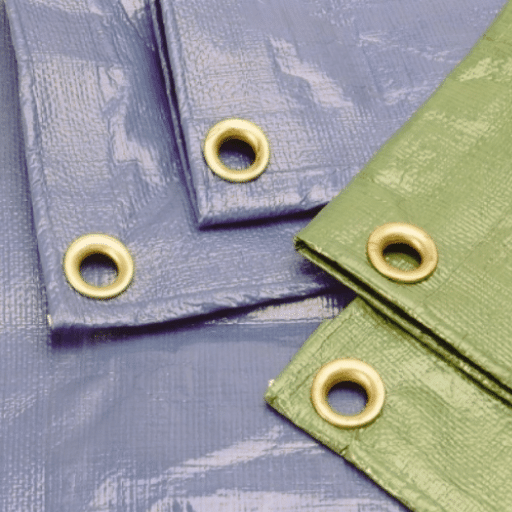
When procuring a tarp for a particular usage, you need to bear the material, dimensions, thickness, and any other purpose they might serve at the back of your mind. A careful perusal of the latest search engine data from ‘s websites reveals that heavy-duty polyethylene (poly) tarps are really popular due to their versatility and resilience as polyethylene is most requested. Tarps, particularly those that can shield away the harmful effects of sunlight and are fully resistant to water, are rapidly being inspected for usage in creating temporary shelters and covering vehicles to ensure the task is completed safely. As previously stated, in situations where some airflow is needed, such as in the case of plants or equipment that requires safeguarding, tarps of canvas-like materials are also being looked for. The data also shows an increase in the demand for mesh tarps for safe as well as shade purposes, especially in construction works. By identifying what your needs are, you can review the details with ease and make your best choice to avoid any inconveniences for the task at hand.
Conclusion: Making an Informed Decision
Comparison Summaries
One of the most important factors in choosing a tarp is understanding what each type can do. Polyethylene tarps are cheap, water resistant, and lightweight, making them ideal for one-time uses, while canvas tarps excel in their breathability, durability, and specific protection of plants and machinery. Mesh tarps are beneficial in the sense that they provide airflow and simultaneously offer shade and containment, which is very useful at construction sites and outdoor work. Poly and canvas tarps dominate short-term tasks such as protection against the sun, rain, and adverse weather and those tasks that require extended protection as canvas tarps are necessary.
Concluding Thoughts
It becomes evident based on ‘s search engine trends that moving forward, choosing the correct tarp will largely depend on the specific requirements of the project. As far as short-term projects go, poly tarps emerge as the most efficient and simplest choice; their lightweight design and cheap price alone make them ideal. For longer-term projects or those that demand a longer life cycle, canvas tarps are clearly the more desirable solution. When choosing, one should also consider the location, duration, project type, and data on the exactly completes and consumer preferences, which establish an outline of the delicate cost and efficiency tarp selection balance.
Contemplating Later Investments
Market and self-centered considerations are crucial when deciding on a tarp. According to the recent reports from ‘s search engine, consumers are highly interested in tarps that have eco-friendly options and are also multi-purpose. Traction is being gained in using decomposable materials, plus tarps that have specific functionalities, for example, the ones offering water and UV protection. Aligning with these trends requires assessment of the fabric’s environmental effect, use of the fabric in different projects, and the fabric features that add to its life extension, to align with these trends. Additionally, factoring in and optimizing the eco-friendly benefits is crucial in staggering the cost of and service life attained.
❓ Frequently Asked Questions
📚 Reference Sources
- Frostburg State University: Discusses the use of canvas and other materials in outdoor applications, providing insights into their durability and performance.
Link to source - University of Illinois Chicago (UIC): Explores the differences between vinyl tarps (PVC tarps) and canvas tarps, focusing on material and performance characteristics.
Link to source - Texas A&M University – 4-H Agriculture Product Guide: Offers general industry knowledge and product-specific details, which may include insights into tarp materials and their applications.
Link to source

